
Hoplitis anthocopoides is a species in the family Megachilidae, in the order Hymenoptera . The distribution range of Hoplitis anthocopoides includes Africa, Europe, Northern Asia, and North America.
Osmia glauca is a species in the genus Osmia, in the family Megachilidae . It is found in North America.
Triepeolus grandis is a species of cuckoo bees in the family Apidae. It is found in the United States and Mexico.

Triepeolus is a genus of cuckoo bees in the family Apidae. There are at least 140 described species in Triepeolus. The majority of species whose life history is known are kleptoparasitic in the nests of bees in the tribe Eucerini, especially the genera Melissodes and Svastra.
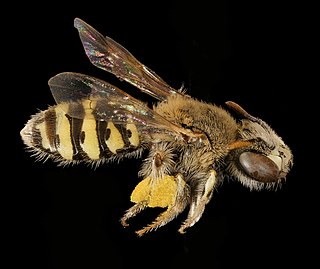
Calliopsini is a tribe of mining bees in the family Andrenidae. There are at least 120 described species in Calliopsini.

Bombus vandykei, the Van Dyke's bumblebee, is a species of bumble bees in the family Apidae. It is found in North America.
Triepeolus rufithorax is a species of cuckoo bee in the family Apidae. It is found in North America.

Anthidiini is a tribe of insects in the family Megachilidae. There are at least 40 genera and 840 described species in Anthidiini. There is strong evidence that the tribe is monophyletic.
Conanthalictus is a genus of sweat bees in the family Halictidae. There are about 13 described species in Conanthalictus.

Lithurgopsis is a genus of northern cactus woodborers in the family Megachilidae. There are at least nine described species in Lithurgopsis.
Habropoda pallida, known generally as the pallid habropoda or white-faced bee, is a species of anthophorine bee in the family Apidae. It is found in Central America and North America. Females build nests and are particularly likely to provision the young with pollen from Larrea tridentata plants.
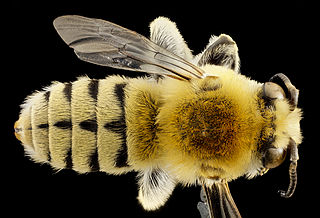
Habropoda is a genus of anthophorine bees in the family Apidae. There are at least 50 described species in Habropoda.

Dufourea monardae, the monarda dufourea, is a species of sweat bee in the family Halictidae. It is found in North America. It is an oligolectic bee on bee balm plants.
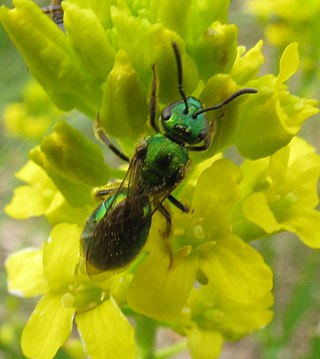
Augochlorella is a genus in the bee family Halictidae, commonly called sweat bees. They display metallic coloration, ranging from reddish to gold to bluish green, as is typical for other genera in the tribe Augochlorini.

Dianthidium is a genus of leafcutter, mason, and resin bees in the family Megachilidae. There are at least 20 described species in Dianthidium.

Stelis is a genus of kleptoparasitic cuckoo bees in the family Megachilidae. There are at least 100 described species in Stelis.
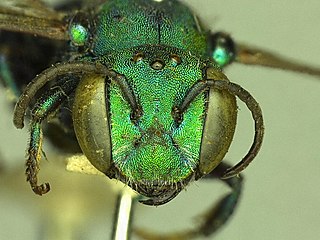
Osmia foxi is a species of mason bees in the family Megachilidae. It is found in New Mexico and southeastern Arizona in the United States and in Sonora, Mexico.

Osmiini is a tribe of leafcutter, mason, and resin bees in the family Megachilidae. There are about 19 genera and at least 1,000 described species in Osmiini.
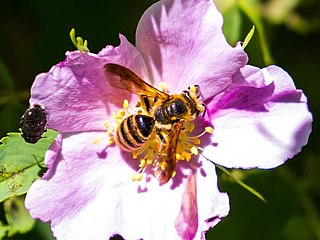
The golden-haired miner bee is a species of miner bee in the family Andrenidae. The female bees are 8 to 10 mm in length, and males are 6 to 9 mm long. It is found in the western United States, and is relatively rare outside California. It looks very similar to the death camas miner bee but is smaller.
Perdita rivalis is a species of mining bee in the family Andrenidae. It is found in North America.















